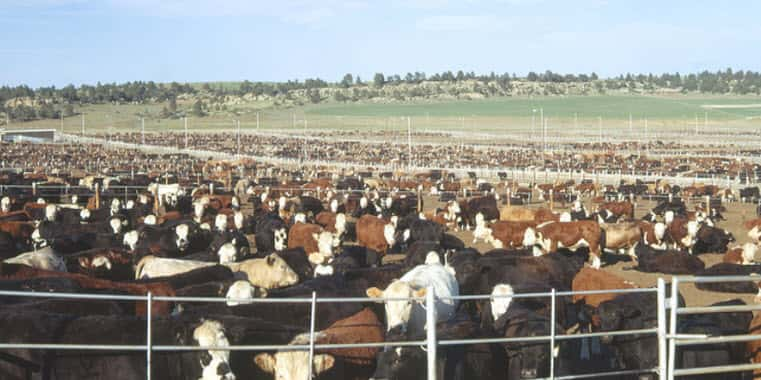The U.S. Department of Agriculture (USDA) today announced that beginning Monday, August 9, 2021, it will issue two new USDA Market News reports based on Livestock Mandatory Reporting data that will provide additional insight into formula cattle trades and help promote fair and competitive markets.
This action is one piece of USDA’s efforts to deliver on President Biden’s Executive Order 14036 on Promoting Competition in the American Economy, which directed USDA to, among other things, “enhance price discovery, increase transparency, and improve the functioning of the cattle and other livestock markets.” The Executive Order on Competition launched a whole-of-government effort to promote competition, including 72 specific agency initiatives.
USDA has already undertaken several other initiatives under the Executive Order, including announcing investments of at least $500 million in meat processing capacity, new rulemakings under the Packers & Stockyards Act, and a top-to-bottom review of the “Product of USA” label.
The first new report, the National Daily Direct Formula Base Cattle, which will be issued on Monday, August 9, will provide greater information into the foundational prices used in cattle market formulas, grids and contracts. This will enable stakeholders to see the correlation between the negotiated trade and reported formula base prices, as well as the aggregated values being paid as premiums and discounts.
Daily formula base price reports will be national in scope and released in morning, summary and afternoon versions. The weekly and monthly formula base reports will be both national and regional in scope and include forward contract base purchase information.
The second report, the National Weekly Cattle Net Price Distribution, which will be issued Tuesday, August 10, will show the volume of cattle purchased at each different level of pricing within those formulas, grids, and contracts. More specifically, the report will show at what levels (price and volume) trade occurred across the weekly weighted average price for each purchase type – negotiated, negotiated grid, formula and forward contract.
Currently, the market speculates whether large or small volumes of cattle trade on both sides of the price spread. And in fact, with premiums and discounts applied to the prices, the spreads shown on reports can be wide. Publishing a price distribution for all cattle net prices will offer more transparency to each of the purchase type categories.
This report is a window into what producers are paid for cattle (net) and retains confidentiality by segregating volumes purchased in $2.00 increments +/- the daily weighted average price depending upon premiums and discounts. AMS has published a similar net price distribution report for direct hogs since January 2010.
“During the past five years, stresses and disruptions caused by concentration in livestock markets have hurt producers, workers, and consumers, and highlighted vulnerabilities in America’s food system supply chain resiliency. Current negotiated cash cattle trade is approximately 30% less than it was in 2005, while formula transactions have increased at the same rate. Our new reports on formula transactions will bring needed clarity to the marketplace.” said Secretary Tom Vilsack. “Also, in the coming months, we plan to conduct several producer-focused outreach sessions to help producers and others understand how these data can inform real-world marketing decisions at farm, ranch, feedlot, and other points in the supply chain.”
This announcement also furthers the Biden-Harris Administration’s efforts to promote the resilience of critical supply chains as directed by Executive Order 14017 on America’s Supply Chains. By providing greater insight into the nearly 80 percent of the cattle market traded outside of the cash negotiated spot market, the new reports shine more light on the prices paid to cattlemen and women and the overall market dynamics undergirding the prices consumers pay at the grocery store.
USDA’s efforts to strengthen the food system is a vital component of the Administration’s whole-of-government response to address near-term supply chain challenges to the economic recovery. Through the Supply Chain Disruptions Task Force, of which Secretary Vilsack is a member, the Administration is convening stakeholders to diagnose problems and surface solutions—large and small, public or private—that could help alleviate bottlenecks and supply constraints related to the economy’s reopening after the Administration’s historic vaccination and economic relief efforts.
These new reports will be issued by USDA Market News, overseen by the Department’s Agricultural Marketing Service.
####
USDA – 2021


